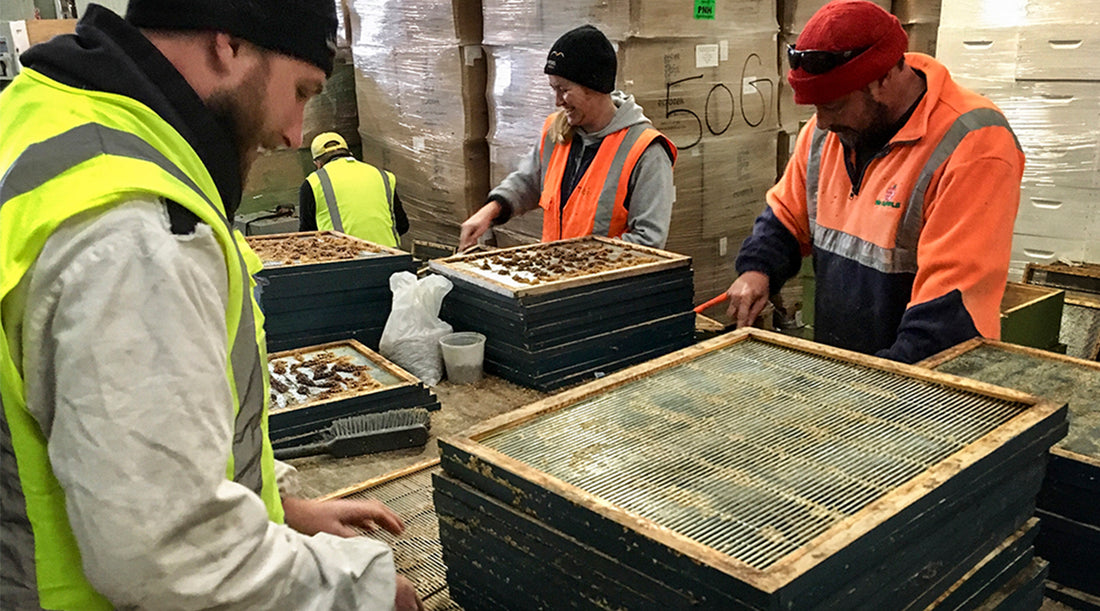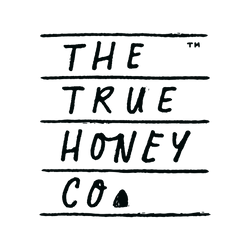
It’s not just our stripy little friends with an indomitable spirit and indefatigable work ethic. Our team of intrepid beekeepers and ingenious honey makers work pretty hard too. Here’s a peek behind the scenes at what they managed to tick off their to do list this month.
Brr, it’s cold, shut the door! During June, bees are safe and snug in tight clusters inside their hives, with hive entrances closed as much as possible to keep in the heat. The really chilly days (<14°C) and shorter daylight hours have already triggered a hibernation response from our queens, who sense that there’s less of the food and warmth needed to sustain brood production. They stop laying their eggs to reduce the numbers of tiny mouths to feed. To preserve the contents to the hive’s ‘larder’ even further, the industrious worker bees will boot out the layabout drones and not let them back into the hive. Not so great for the drones, but key to the winter survival of the colony.
It’s quite normal to see the number of brood frames go from eight down to about three in early winter, as older bees die off. A colony of 60,000 bees can shrink to take up no more room than a softball. The survivors start taking it slow to conserve energy and winter food stores, while they cluster around their queen and remaining brood. They generate heat by beating their wings to keep the hive interior a toasty 34°C. The clever bees will also move to different positions on their honey frames, so they can feed without letting their precious queen get too cold.
Meanwhile around our winter hive sites... some of the True crew are sorting out the track maintenance needed to make sure the beekeepers have good access to get to the hives. This needs to be done carefully, to avoid damaging or disrupting the beautiful natural landscapes around the sites. These DIY jobs include restoring weather damaged or eroded tracks, trimming trees, fixing washed out culverts and repairing electric fences.
During the winter, our beekeepers only open the hives on the warmest days, and just long enough to check that the bees are healthy and have enough food to get them through. They’ll administer a top up feed if needed.
June 13-16 this year was filled to the brim with Fieldays action. Fieldays is a chance for us to show off the result of all this hard work – our range of The True Honey Co. high MGO rated Mānuka honeys. There was a Q&A session with attendees, who come from all over this fine nation of ours to learn and share the latest in farming research, tools and products.
Back in the shed, it’s all hands to the pump. (‘Pump’ being our honey boxes). These are carefully scraped before being placed in the cool-store for storage until the start of next season. Storing them at a low temperature helps to prevent waxmoth. Wax build up is also gently removed from the queen excluder. This lovely pure wax is melted down, so it can be used to make candles, beeswax food wraps and in skincare and other products. It’s a lovely comforting smell, melting beeswax.
Midwinter is also time for a final stocktake of all the gear, so our team knows there are fully tooled-up in time for the upcoming spring and summer. Quite a bit of gear maintenance and general fixer-uppering goes on, alongside a good clean and tidy of the shed.
June is also a sterling time to go visit our absolutely brilliant landowner partners, and see how they’ve been getting on. Many of The True Honey Co. landowner partners are farmers, who let us place our hives in otherwise unproductive land that’s blanketed in Mānuka bush. Other landowners kindly let us access nice sheltered spots to keep our hives safe and snug over winter. We like to drop off some lovely Mānuka honey as a sweet way to say thank you for the last year of working together.
See you next month!

